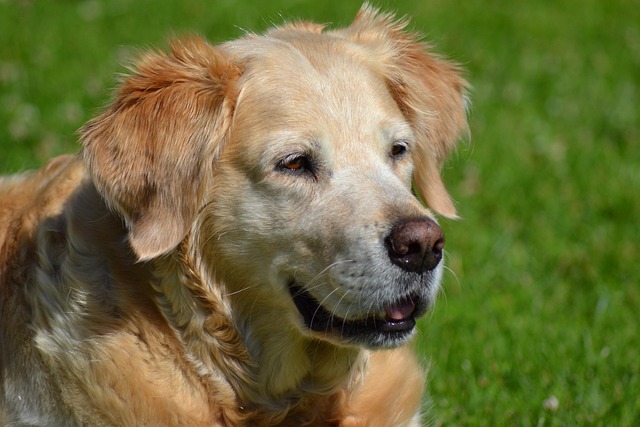
How can I tell if my dog's heatstroke is serious
Let’s be real: It’s a sticky August morning in Los Angeles, and you took your 2-year-old Golden Retriever, Max, for a walk a little later than usual
I’ll open with a scenario every new U.S. dog parent recognizes: You’re ending a walk in Denver’s winter chill with your 8-month-old Golden Retriever, and he suddenly stops—lifting one paw, then another, like he’s stepping on glass. You kneel to check, and your heart sinks: His paw pads are dry, flaky, and rough to the touch. You wonder, Do dry paws hurt dogs, or is he just being fussy? The answer is clear—dry paws aren’t just a cosmetic issue; they’re painful, and left untreated, they can turn into something worse. This worry is universal, especially for owners navigating extreme weather, but understanding why dryness hurts and how to fix it makes all the difference.
The science behind dry paw pain lies in a dog’s paw pad design. Paws have a tough outer layer of keratin (like our fingernails) that protects a soft, sensitive inner pad filled with nerves and blood vessels. When this outer layer dries out—from winter salt, summer pavement, or dry indoor heat—it loses its flexibility and cracks. My Austin vet, who treats dozens of dry-paw cases yearly, explains: “Even mild dryness creates tiny tears in the keratin layer, which irritate the nerve-rich inner pad. It’s like us walking around with cracked, bleeding hands—except dogs can’t tell us it hurts, so they limp or avoid walking.” Unlike human skin, dog paw pads don’t produce much natural oil, so they’re prone to drying out when exposed to harsh elements.

Let’s break down how to spot and soothe dry paws with real stories. First, check for pain signals: If your dog licks their paws excessively, avoids hard surfaces, or limps, their paws are likely hurting. My LA friend’s Pug started hiding under the couch after walks—turns out his dry paws were so sore he didn’t want to move. Second, moisturize with safe, gentle products: Unrefined olive oil or pet-specific paw balm works best—warm a small amount between your hands and massage into clean paws. I did this for my Golden Retriever nightly; after 3 days, he stopped limping and started trotting happily again. For pups who lick the oil off, put on soft paw socks (use positive reinforcement—give a treat when they let you dress their paws!) to let the moisture sink in. Third, protect paws before outings: Apply a wax-based protectant (like Musher’s Secret) before walks on salt or hot pavement. My Chicago roommate swears by this—her Husky’s paws stay smooth even in subzero temperatures.
This ties directly to U.S. pet culture and rules. First, paw care is part of responsible ownership: Keep your dog’s rabies vaccine records handy (required in every state, and apartments demand proof) and always carry poop bags on walks (fines hit $300 in NYC for skipping this). A dog with sore paws may have accidents indoors, so keeping paws healthy helps with potty training too. For apartments, set up a “paw station” by the door: a towel to wipe salt, moisturizer, and treats—this turns care into a quick, consistent routine. Community etiquette matters too: Avoid walking on hot pavement during midday (test it with your hand—if it’s too hot for you, it’s too hot for them!) and stick to shaded paths. Never punish your dog for limping or licking their paws—they’re in pain, not being disobedient; redirect their attention with a chew toy while you check their paws.
Watch for signs of improvement: Your dog stops limping, licks their paws less, and trots confidently on walks. Dry paws do hurt dogs—but with simple, consistent care, you can turn their discomfort into relief. That’s the peace of mind every new dog parent needs.

Let’s be real: It’s a sticky August morning in Los Angeles, and you took your 2-year-old Golden Retriever, Max, for a walk a little later than usual

You're enjoying a summer afternoon at the park when you notice your dog has stopped panting and appears disoriented - their gums are bright red

Let’s paint the picture: You’re in your Denver apartment, watching your 4-year-old Boston Terrier, Ruby, plop down mid-play session with her favorite toy

Many dog owners notice their pets nails seem shorter after regular walks,but how much does this daily activity actually help?The answer depends on where you walk—concrete sidewalks or asphalt streets gently file nails as a dog's paws hit the ground

Most dog owners notice their pup scooting across the carpet at some point, but few connect it to impacted anal glands. These small sacs near a dog’s rectum secrete a scent for marking territory

Most vets agree that regular dog teeth cleaning is key to avoiding painful dental issues later. For healthy adult dogs, a professional cleaning at the vet’s office every 12 to 18 months usually works well.